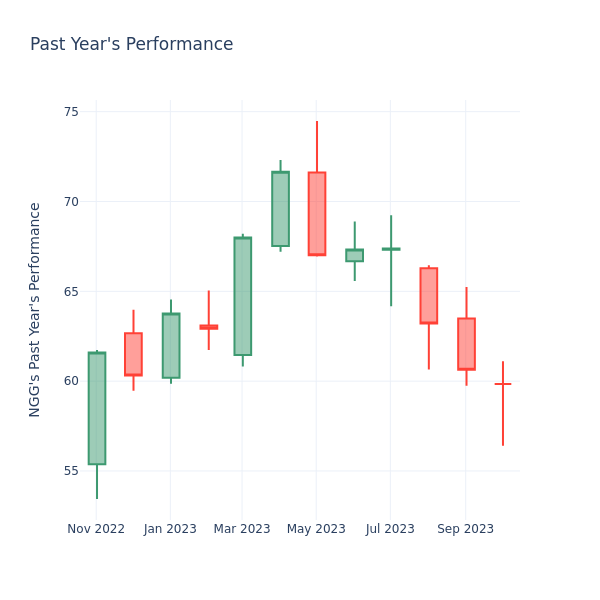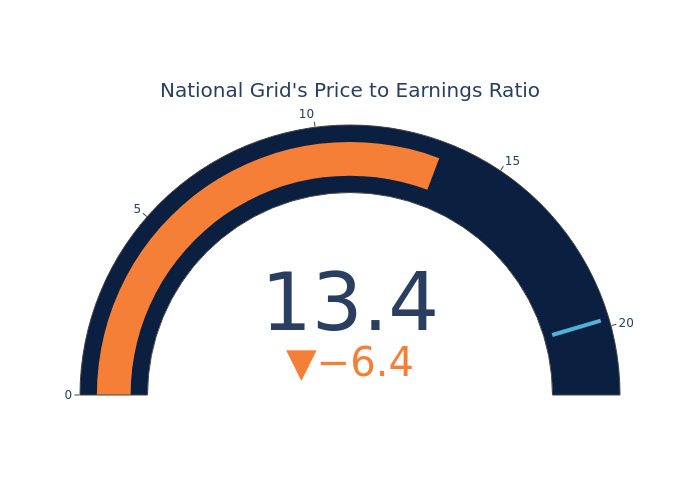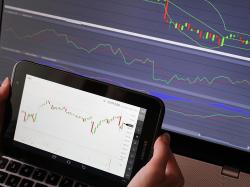P/E Ratio Insights for National Grid
Author: Benzinga Insights | October 30, 2023 01:15pm
In the current market session, National Grid Inc. (NYSE:NGG) stock price is at $59.83, after a 0.08% drop. However, over the past month, the company's stock increased by 3.96%, and in the past year, by 8.78%. Shareholders might be interested in knowing whether the stock is overvalued, even if the company is not performing up to par in the current session.

Comparing National Grid P/E Against Its Peers
The P/E ratio measures the current share price to the company's EPS. It is used by long-term investors to analyze the company's current performance against it's past earnings, historical data and aggregate market data for the industry or the indices, such as S&P 500. A higher P/E indicates that investors expect the company to perform better in the future, and the stock is probably overvalued, but not necessarily. It also could indicate that investors are willing to pay a higher share price currently, because they expect the company to perform better in the upcoming quarters. This leads investors to also remain optimistic about rising dividends in the future.
Compared to the aggregate P/E ratio of the 19.84 in the Multi-Utilities industry, National Grid Inc. has a lower P/E ratio of 13.41. Shareholders might be inclined to think that the stock might perform worse than it's industry peers. It's also possible that the stock is undervalued.

In conclusion, the price-to-earnings ratio is a useful metric for analyzing a company's market performance, but it has its limitations. While a lower P/E can indicate that a company is undervalued, it can also suggest that shareholders do not expect future growth. Additionally, the P/E ratio should not be used in isolation, as other factors such as industry trends and business cycles can also impact a company's stock price. Therefore, investors should use the P/E ratio in conjunction with other financial metrics and qualitative analysis to make informed investment decisions.
Posted In: NGG







